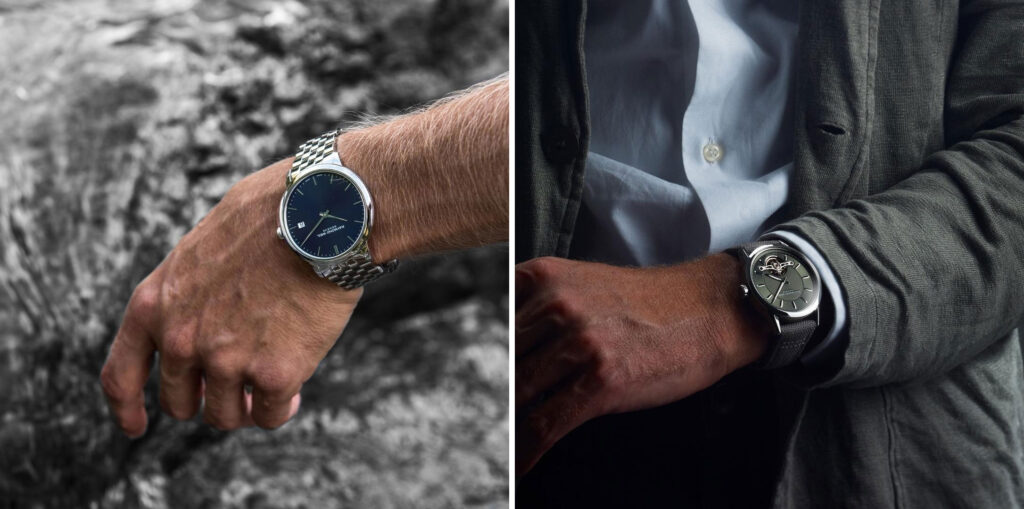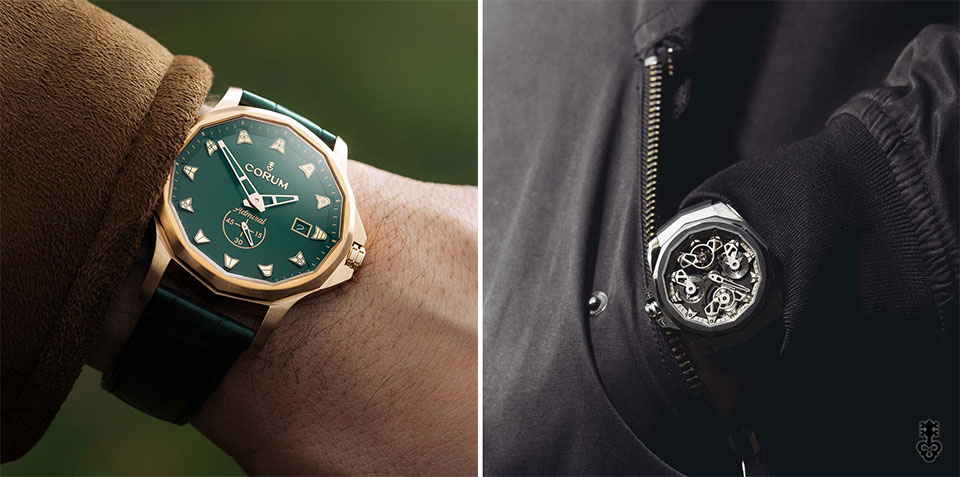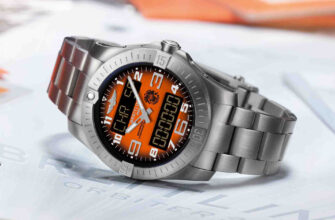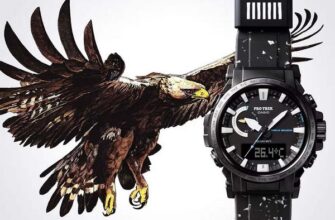The world of watches is truly endless. There are so many samples in this ocean! Tiny and huge, made of precious metals and plastic, for every day and for sports, for special occasions and for a relaxed party, minimalistic or avant-garde design, functionally simple and extremely rich ... It can be listed for a long time, but there is one sign by which all watches are divided into two large groups - mechanical and quartz.
Which one to choose? Or even more generally: which is better? Not so long ago, we considered the topic “Quartz watch. Pros and cons". And today, in the same perspective - about mechanical wristwatches.
Basics
The schematic diagram of a classic watch movement is nearly three hundred years old. Mastered in the XNUMXth century, this scheme, in the main, has survived to our time and, no doubt, will continue to live on. Of course, a lot has been added to the original, a lot has been improved - after all, technologies do not stand still - but the basics remain unchanged. This alone is irrefutable evidence: the clockwork belongs to the fundamental achievements of mankind! How would we live without him ?! Perhaps it is enough to say that we would not even know the exact outlines of the continents of our planet - after all, mapping became possible only thanks to the marine chronometers of the Englishman John Garisson and the Frenchman Ferdinand Berthu ... And space exploration began - and, even in our electronic era, continues! - with a very significant participation of mechanical watches.
There are countless examples. At the same time, the movement is a very complex, sophisticated design, consisting of many miniature parts, and they all work in perfect harmony. And most importantly, at the same time, simple - like everything ingenious. We will not go into technical details here, the basics are quite simple and straightforward.
First. In order for the clock to work, it must be supplied with energy. In electronic (quartz) watches, the source of energy is a battery, and in mechanical watches, a charged spring. (Naturally, we are talking here about wristwatches, in extreme cases about pocket watches, in general - about portable ones: in large stationary watches, heavy pendulum weights can supply energy to the mechanism.)
Second. The spring, usually “packed” into a structural element called the barrel, transfers the force to the heart of the watch - the escapement, or simply the escapement (French echappement, English escapement, German Hemmung). Here, in turn, the main thing is a regulator consisting of a massive (by the standards of micromechanics) balance wheel, or simply a balance, and the thinnest (commensurate with a human hair) spiral, which is sometimes called a hair. Together, it is an oscillatory system that sets the exact rhythm of the clockwork. The balance / spiral system was invented in the XNUMXth century, independently and almost simultaneously, by the great scientists - the Dutchman Christian Huygens and the Englishman Robert Hooke. Additional levers and wheels that are part of the escapement of a particular scheme (the most common escapement), on the one hand, "push" the balance / spiral system, on the other hand, transmit its vibrations back to the transmission with the required frequency.
The third. And the transmission, it is also a wheel transmission, bears the beautiful name angrenage in watchmaking. In the most basic version of the clockwork, there are four gear wheels, in mechanisms with a large number of functions, there can be much more of them, but the essence remains the same - the transfer of movement from the barrel to the regulator and from the escapement to the hands and other indicators.
By the way, the mechanism for winding the watch and translating the hands (as well as other indicators) is also called a beautiful French word - remontuar. But this is how we are, by the way ...

A little bit beyond the basics
We have already mentioned that the basic movement, which is already complex (over a hundred parts!), Can be further complicated by various functions and options. And then there are more and more details ... The movement of the Patek Philippe Caliber 89 pocket watch is considered a record in this respect - it contains 1728 components! Which can be understood given the number of functions: 33 (thirty three), not counting hours, minutes and seconds. Well, this is, of course, an exception: only 4 copies were made. with an estimated cost of each of about $ 6 million ...
However, many improvements to the original design of the movement (remember, it is almost 300 years old) have become generally accepted.
Self-winding. Invented by Abraham-Louis Perrelet in 1777 and boils down to the fact that the mechanism is equipped with a part called a rotor. Usually it has the shape of a sector, is attached to an axis in the center of the mechanism, and the center of gravity is maximally displaced to the periphery. This peripheral part is made as heavy as possible, it is made of tungsten, sometimes of gold, increasing the moment of inertia in every possible way. When the hand moves with such a watch, the rotor, under the influence of inertial forces, oscillates on its axis. These vibrations, through the appropriate gear, increase the tension on the mainspring. Subsequently, modified automatic winding systems were created.
Tourbillon. In French it means whirlwind. The device was invented by Abraham-Louis Breguet in 1801 to reduce the influence of gravity on the movement of the mechanism. That was the era of pocket watches, which mostly rest in a waistcoat pocket in an upright position - and in it, the force of gravity especially perceptibly "shakes" the uniformity of oscillations of the balance wheel. The great master solved the problem by placing the escapement, together with the regulator, in a carriage driven by the wheel of the minute hand.
Thus, in a minute, the system goes around all positions in a circle, from the initial one to “upside down” and back, and the influence of gravity is mutually compensated. Today, for wristwatches, this is not particularly relevant, but the solution is so beautiful and requires such jewelry precision during execution - several dozen microscopic components put together should weigh only a few tenths of a gram - that the tourbillon has survived and is one of the most prestigious watch complications.

However, let us stop - after all, we can talk about clock micromechanics almost forever - and go down to earth.
What seems to be sad
Have you noticed that we talked about mechanical watches not without admiration and even inspiration? Yes, but we have a theme - "Pros and Cons"! So let's remember about quartz watches and put forward a few reproaches to the mechanics.
Since we are comparing, it is clear that the disadvantages of mechanics are where it is inferior to quartz. That is, the dignity of the latter.
There are two of them, both are fundamental:
- accuracy of the course;
- autonomy.
Accuracy. The ultra-high frequency of oscillations of the quartz crystal also gives the highest accuracy - only a few seconds a month, and this is even the worst case: the most perfect quartz models deviate from the absolute ideal for a few seconds a year. For example, the 9F quartz movement of the Japanese concern Seiko runs with an accuracy of ± 5 seconds per year!
And what about the mechanics? The most famous certification of the accuracy of the course (Swiss COSC) establishes a permissible average daily deviation of -4 / + 6 seconds per day. The most stringent of the requirements that the Japanese brand Grand Seiko imposes on itself is the VFA standard, which is -1 / + 3 seconds per day. Note, a day! Whereas quartz has comparable values per month, or even per year. It is also important that a serious increase in accuracy also entails a noticeable increase in the price of mechanical watches, and in quartz, already incomparably more accurate, such a relationship is much weaker.
Autonomy. With quartz, everything is clear: change the battery every few years - and that's it. It's not like that with the mechanics, you need to start it quite often. Power reserves of several days (3, 7, sometimes even 10) are considered super-large, they are provided with whole batteries of barrels, this also leads to a rise in price. Of course, self-winding ... But not everyone wears a watch every day and all day! So, it is necessary to start, preferably - daily. And if you forget and the clock has stopped, you also have to set the time, date, etc. Moroka ...
In addition to these two main advantages of quartz (and, accordingly, disadvantages of mechanics), we also note the following. Mechanical watches require periodic maintenance - cleaning the mechanism, changing the oil. Maintenance of quartz, especially with a purely digital indication, comes down to the same banal operation - replacing the battery.
And one more thing: the more functions a mechanical watch has, the more intricate these functions, the more expensive the watch. This dependence is clear and significant. In quartz watches it is incomparably softer - the capabilities of modern electronics make it possible to create very inexpensive watches with a very wide range of functions. And, finally, the price as such: all other things being equal, the mechanics, of course, are much more expensive.
So why do we need mechanics?
But not everything is so sad. Because this is perhaps the most important thing. We will illustrate this main thing with the following analogy: why do we need portraits by Rembrandt and Kramskoy, landscapes by Levitan and Aivazovsky? All the same, and much more accurately (as they say, more vital), you can photograph! And even a smartphone camera ... Right?
Of course it is correct. But it has nothing to do with art. And we, as it must be clear from this text, love watchmaking, which is embodied primarily in micromechanics. We love and that's it. We wish you the same.









